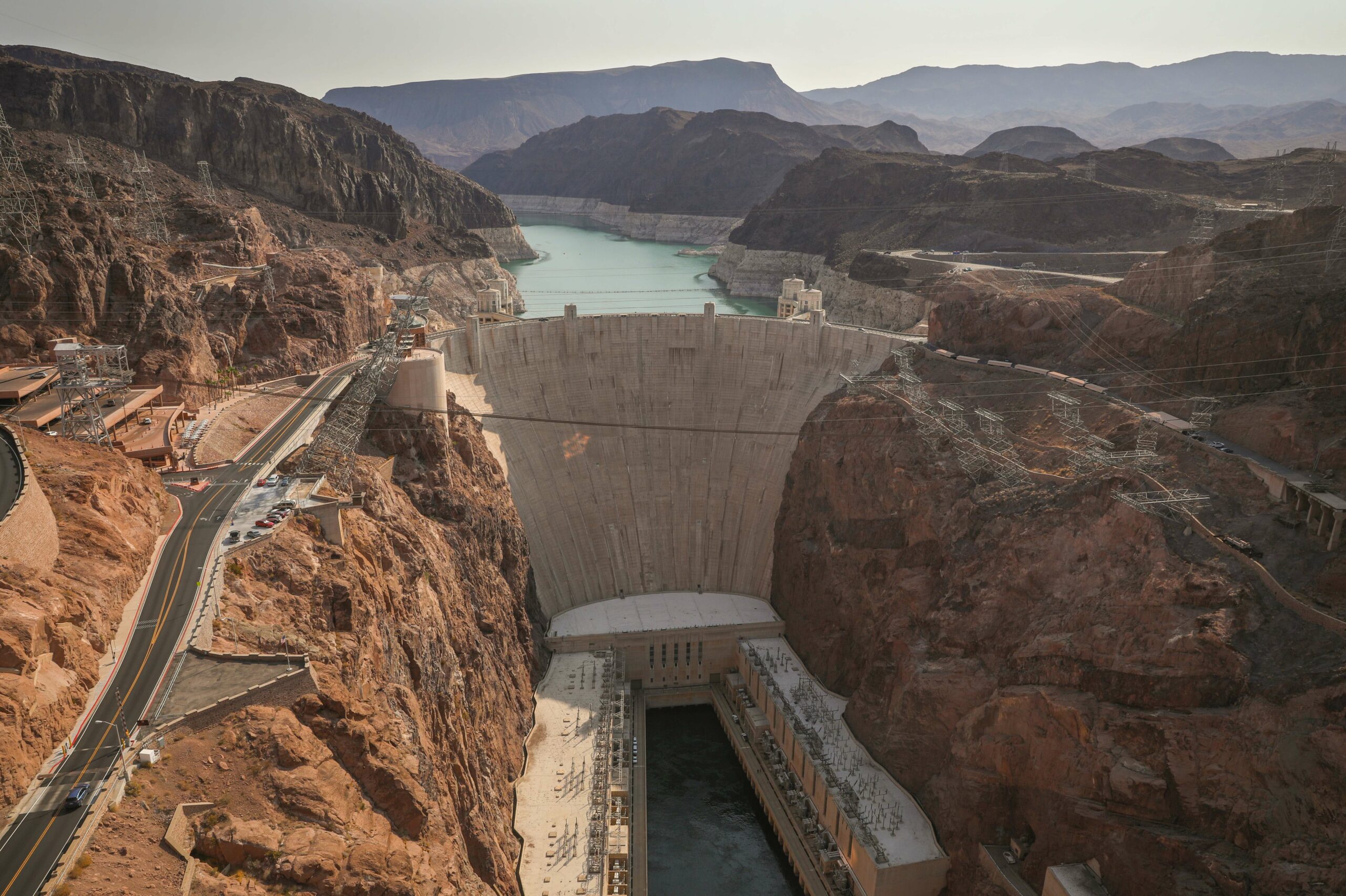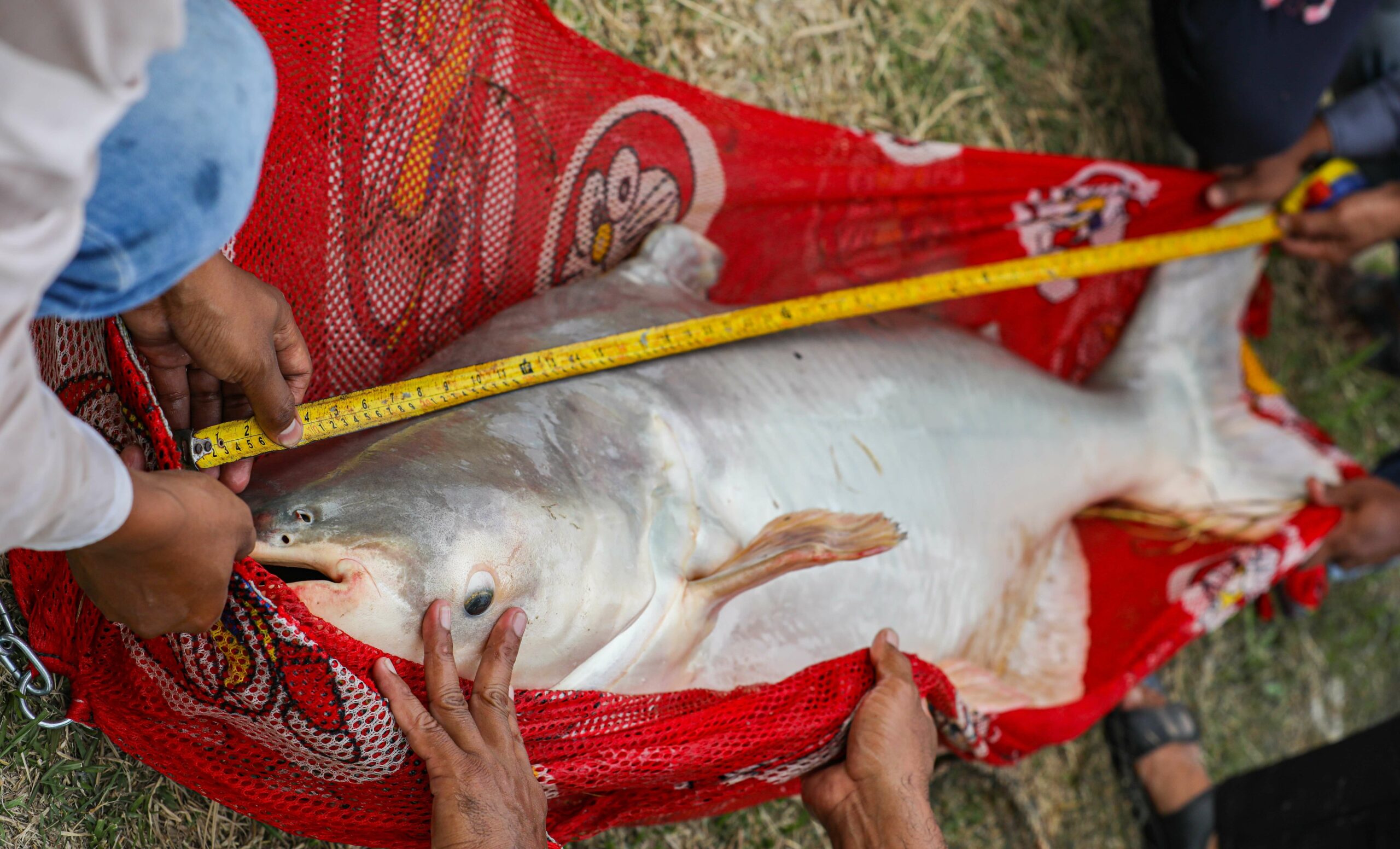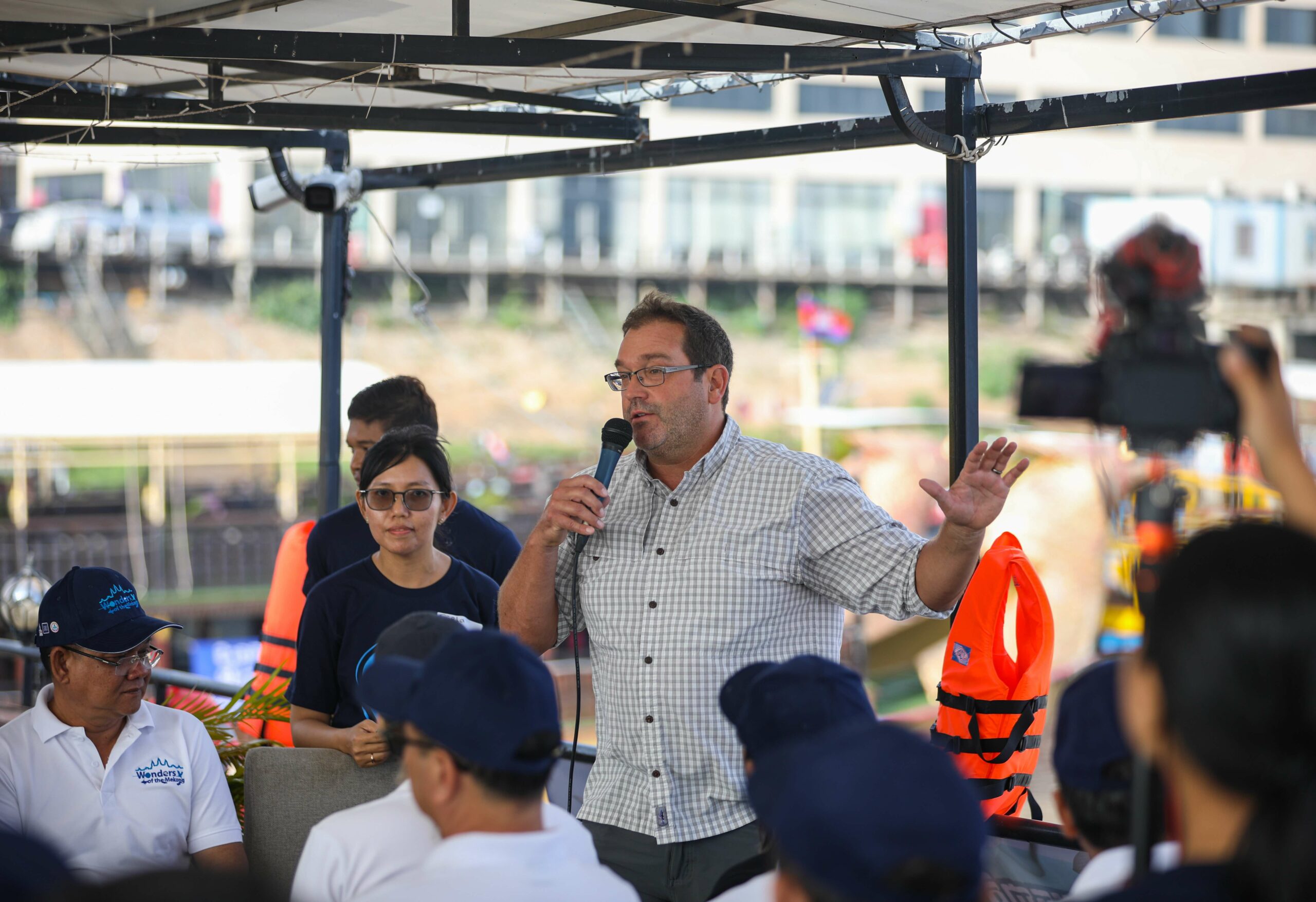Freeing fish isn’t as easy as it sounds, especially if it takes four people to carry some of them.
Tagging and releasing critically-endangered fish across the Mekong River basin is now second nature to Zeb Hogan, a biologist and an associate research professor at the University of Nevada, Reno.
Since 2009, Hogan’s search for the largest fish in the world has been documented in his National Geographic show Monster Fish. Hosting the show, now in its seventh season with more than 40 episodes, has taken Hogan to rivers and lakes in more than 30 countries across six continents.
One of the show’s first episodes focused on the Mekong giant catfish.
Hogan was later selected to lead the research and conservation project, Wonders of the Mekong, which is funded by the U.S. Agency for International Development.
Freshwater conservation has been at the core of his work since Hogan’s college days. With that passion came a quarter-of-a-century long quest captured in his recently published book Chasing Giants: In Search of the World’s Largest Freshwater Fish.
Co-authored with environmental journalist and National Geographic contributor Stefan Lovgren, Chasing Giants follows Hogan’s global search for these “megafish”. Hogan spoke with Southeast Asia Globe about his hopes and fears for these rare species that call the Mekong home.
What first brought your attention to the Mekong River?
I saw an advertisement on a bulletin board at the University of Arizona that highlighted a Fulbright programme on environmental risk assessment at Chiang Mai University in northern Thailand, which sparked my interest because I had been studying the impact of dams on the Colorado River.
As an undergraduate, I had been studying how hydropower can have catastrophic impacts on fish population and radically change river environments. At that time there were large dams proposed for the Mekong River, where many of the fish are migratory and people were incredibly dependent on fish. It was clear to me those dams were going to have an impact not only on fish but on people and nutrition and livelihood. So I submitted a proposal to the program.

The critically-endangered Mekong giant catfish is a key character of your new book. What is the significance of the species?
The Mekong giant catfish is symbolic to the overall health of the Mekong River. It is only found in the Mekong and is one of the river’s largest and most iconic fish species. The giant catfish is highly migratory and is shared between the four countries of the lower Mekong basin.
It is absolutely symbolic of river health and emblematic of the debate on Mekong management and the fate of the river itself.
In Chapter Five – titled with the question ‘Monsters?’ – you write that “megafishes are not what most of us would describe as pretty” and tease at the fact you are constantly told these fish are ugly. Does that impact interest in their conservation?
It does make a difference. There is a reason why a panda is [the World Wildlife Fund] logo and not a giant catfish. However, it goes beyond aesthetics. Many people view these fish as food, which they can be, but when they reach critically endangered status we need to start looking for conservation measures rather than recipes.
Believe it or not, we are getting there. I see it with kids. I speak to classes all the time and I have noticed that kids get just as excited about these megafish as they do with pandas and tigers. That excitement in children is potential for adults. I have been told these fish are ugly many times but I see people beginning to get past that.
The example I write about in the book is sharks. [The 1975 film] Jaws came out when I was a young boy and everyone was terrified of sharks, I was too. We have moved past that fear, it has shifted to a fascination with sharks. The three largest species of sharks are now protected and I believe that shift will also occur with these freshwater fish. If we have the time, many of them are close to extinction already.

The book’s central question is pinning down the world’s largest freshwater fish. On your search to see if the Mekong giant catfish could hold that title you wrote that Cambodia was “the best place to find answers”. Why is that?
Cambodia is the epicentre for fisheries diversity and fish production in the Mekong basin. You have a river system that is home to more species of big fish than anywhere in the world and Cambodia is the core area in the Mekong region. The country is the most important area in the most important river basin for this species.
A fear you wrote about in your book is that “biodiversity conservation in the Mekong would forever play second fiddle to competing with far better funded interests like hydropower.”
Later, you explain how the U.S. government has stepped in to fund a lot of your current research through the Wonders of the Mekong project. Has that had any impact on how people or governments perceive your work?
It hasn’t negatively impacted the project and I don’t think it has negatively impacted its effectiveness. We make our intentions pretty clear with our work.
My work has been very positively received partially because the focus of Wonders of the Mekong is to understand and highlight the many values of a healthy Mekong River. When it is phrased that way, that is an idea that everyone can support. Everyone knows the project is funded by the U.S. government.
To my knowledge, we have avoided controversy by focusing on the science. We are not pushing a political narrative, we are working with our Cambodian partners to understand what is happening in the Mekong and to highlight the values of a healthy river.

What is a takeaway you have had in the process of creating this book?
One of the things I have learned researching and travelling around the world in the process of writing this book is that, almost without exception, the only places these big fish are doing well are where people know about them and have taken it upon themselves to protect them.
We look for bright spots. We look for solutions. That is one of the driving forces behind the book. Without people knowing about these fish, and caring about them and taking action to protect them, many of these species will go extinct.
The reason I wrote the book is because I want to tell the story of the world’s largest freshwater fish and the rivers where they occur. It is a story that connects all of us to rivers and lakes and the freshwater that we depend on to survive. It is the story of extraordinary animals that many people don’t even know exist and need our help for survival.
And if those “bright spots” you have searched for go out?
It is a bleak world. We lose all of these extraordinary animals that make our world special. We lose fisheries that we depend on for food. We lose healthy rivers and clean water that we depend on for survival.
Nobody wants to go to the place without bright spots. We want more bright spots, not less. A world where we have lost all of our bright spots is an unhealthy, less interesting world that we don’t want to live in.

What would you say to a person in Cambodia who is on the fence about picking up your book?
The book starts in the Mekong region and ends in the Mekong region. It starts with the catch and death with, what was at the time, the world’s largest freshwater fish and it ends on a more hopeful note. I would like to think the book mirrors where we are headed in terms of our interest and stewardship of giant freshwater fish.
I do hope that the people who read the book are brought a little bit closer to a freshwater world that we seldom see and don’t appreciate enough.

